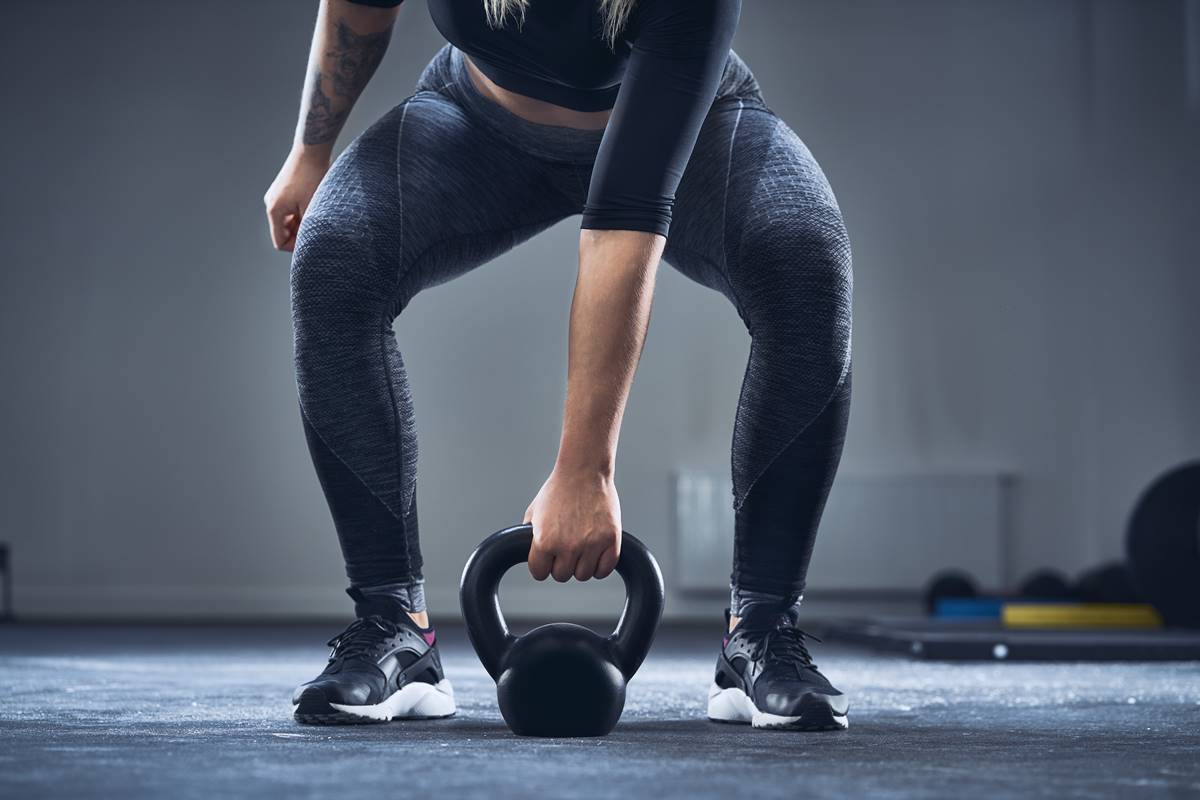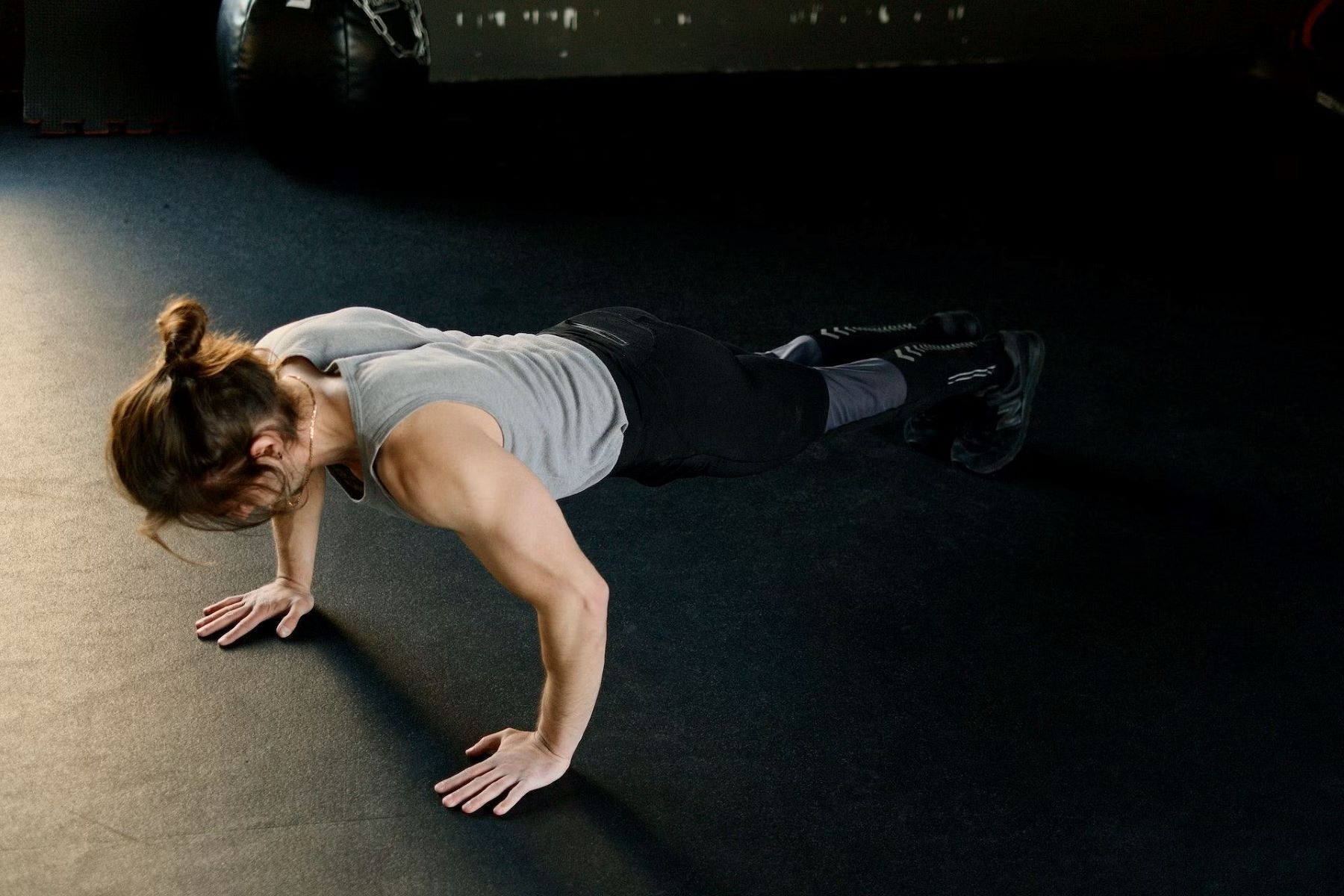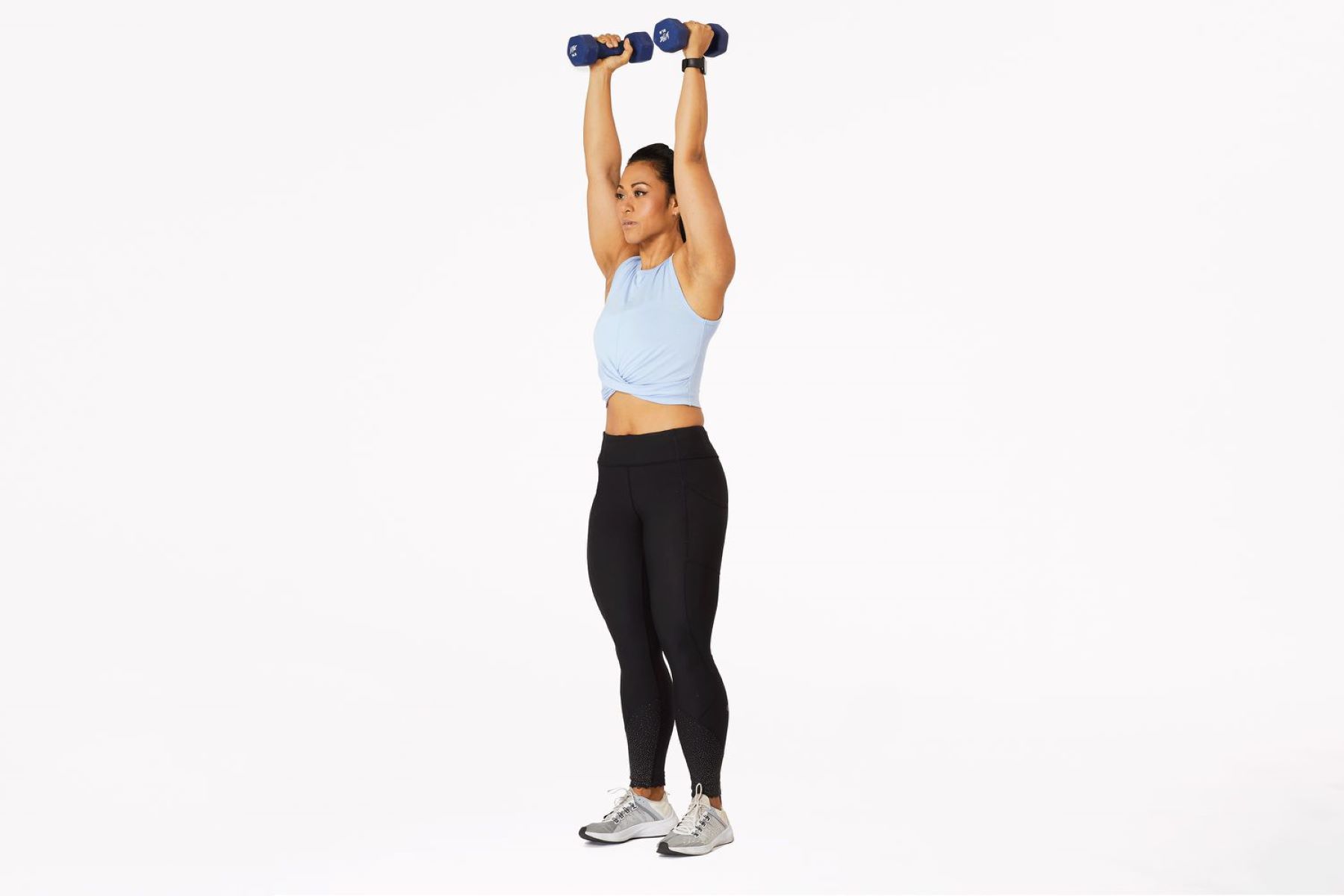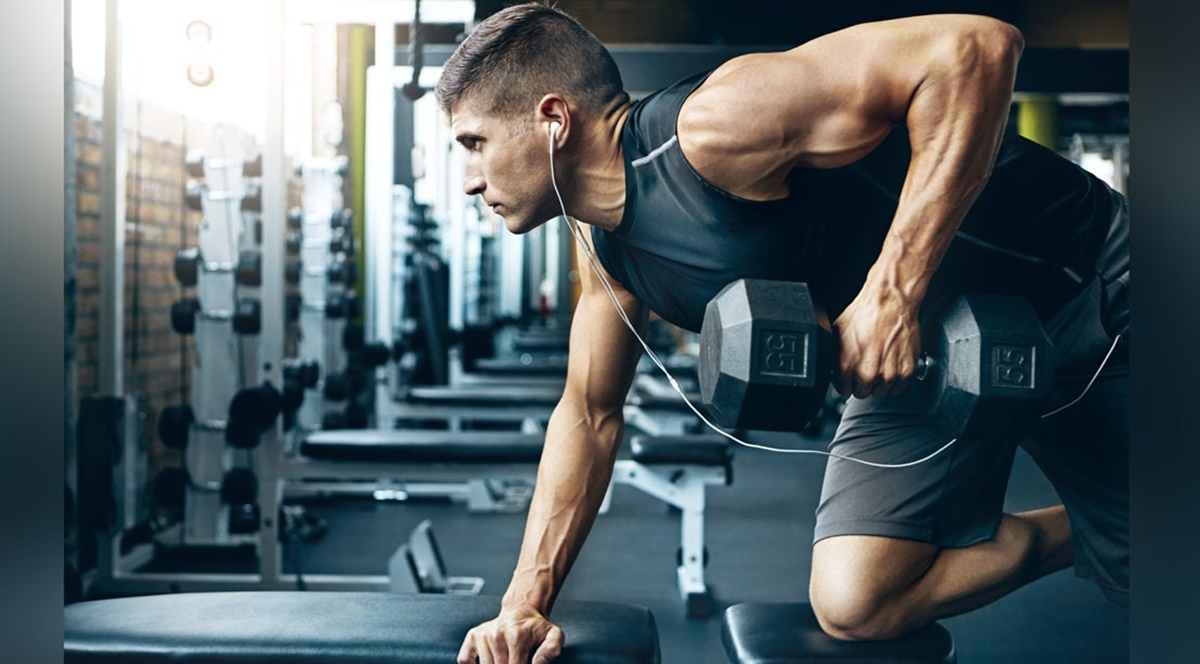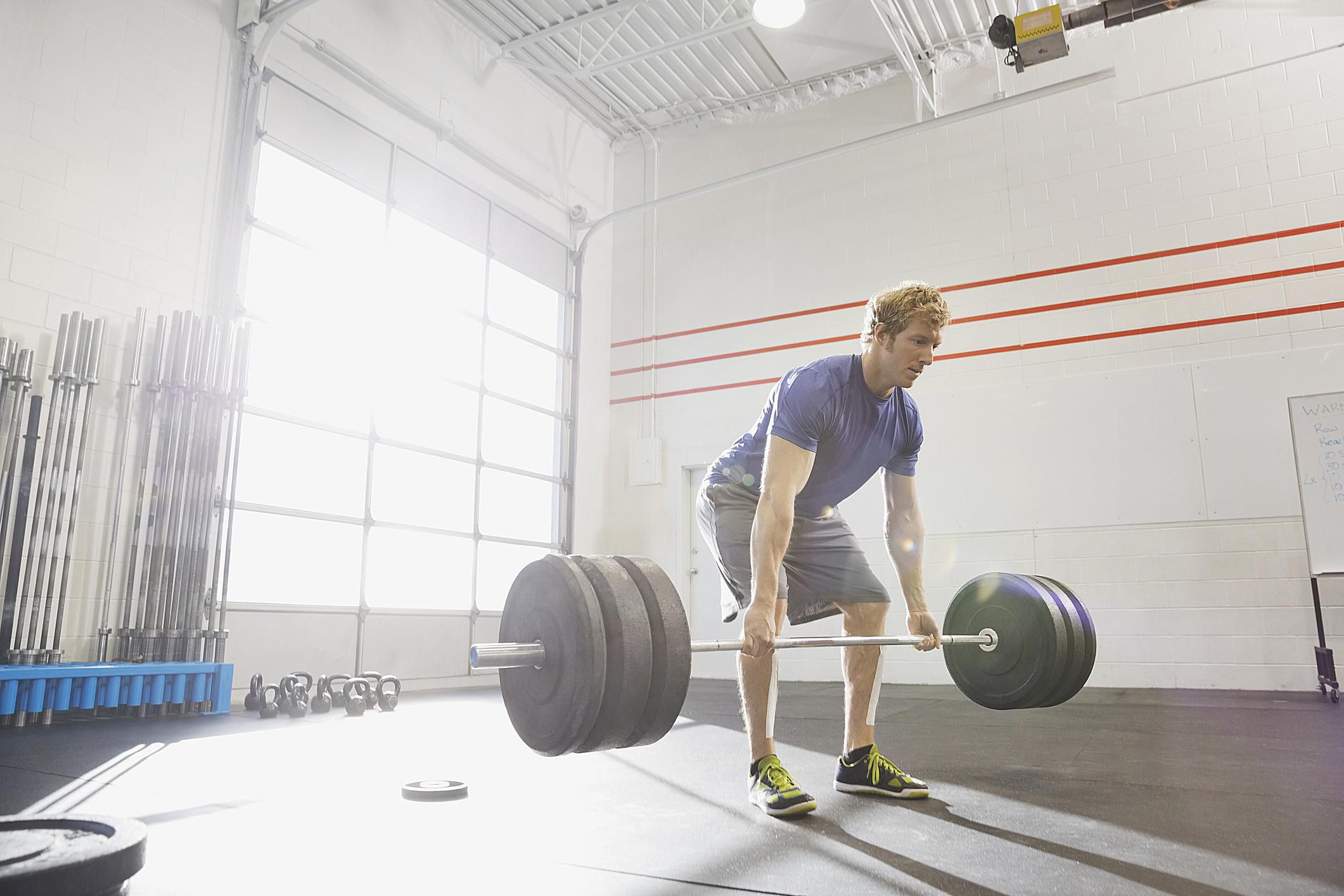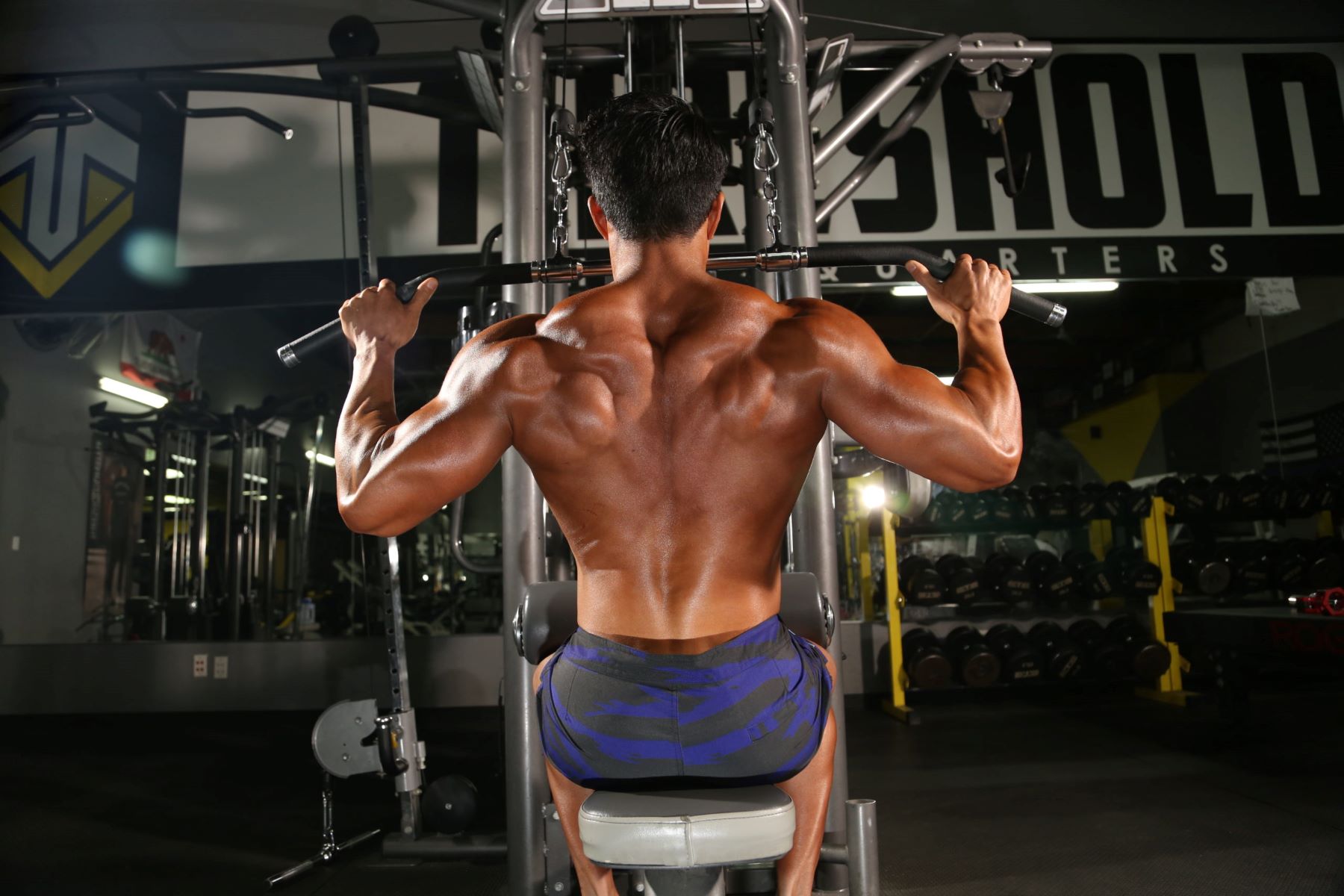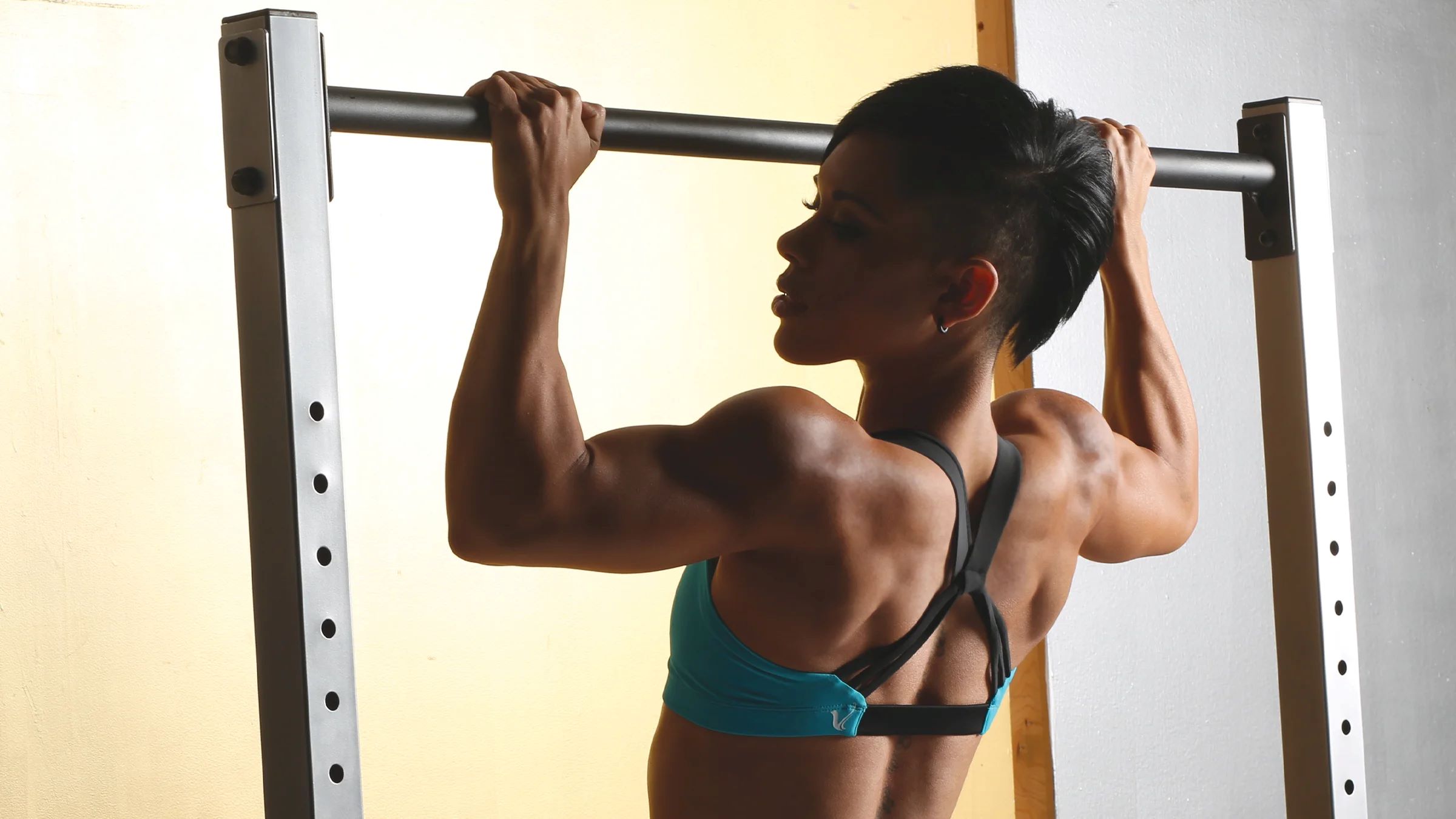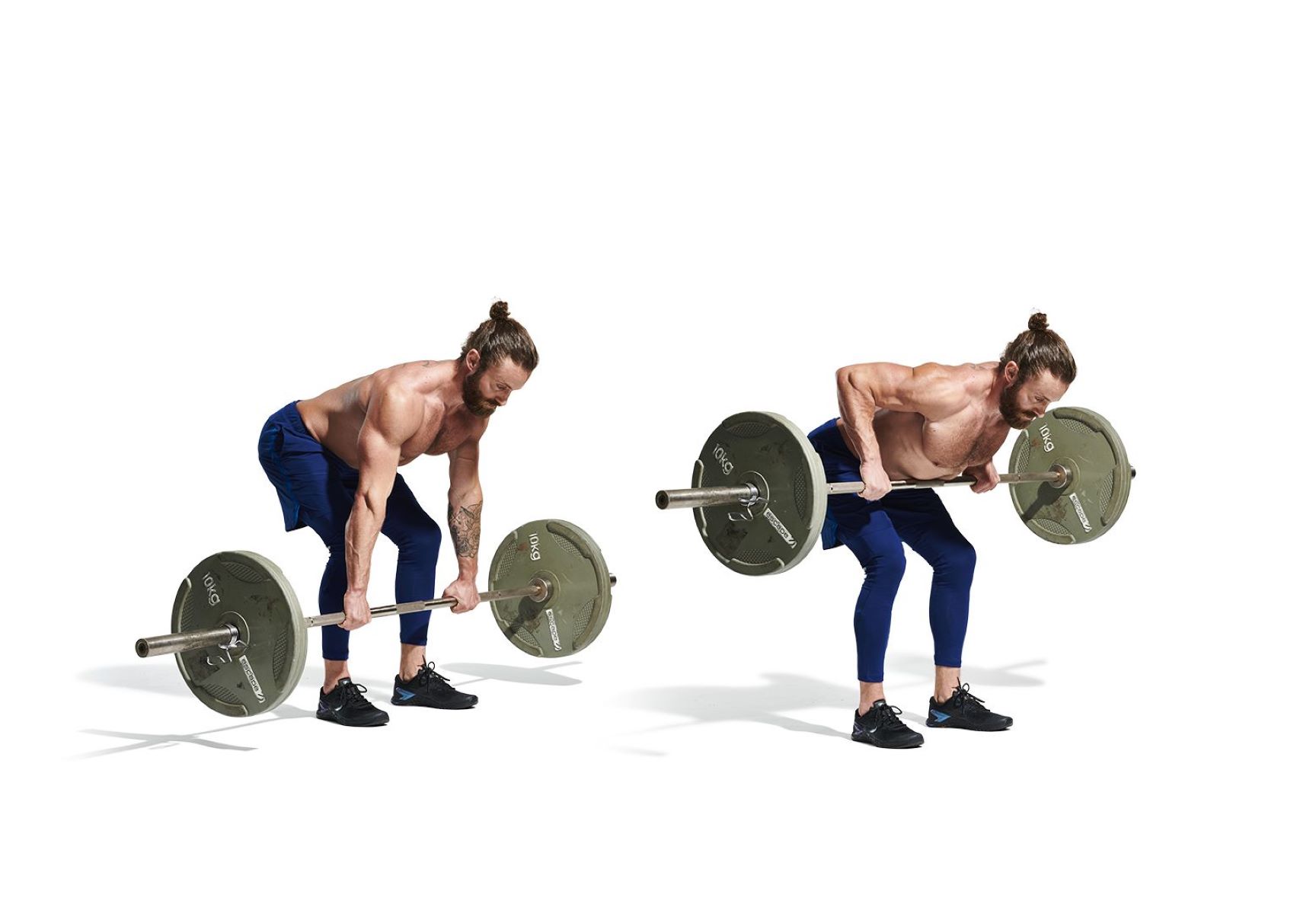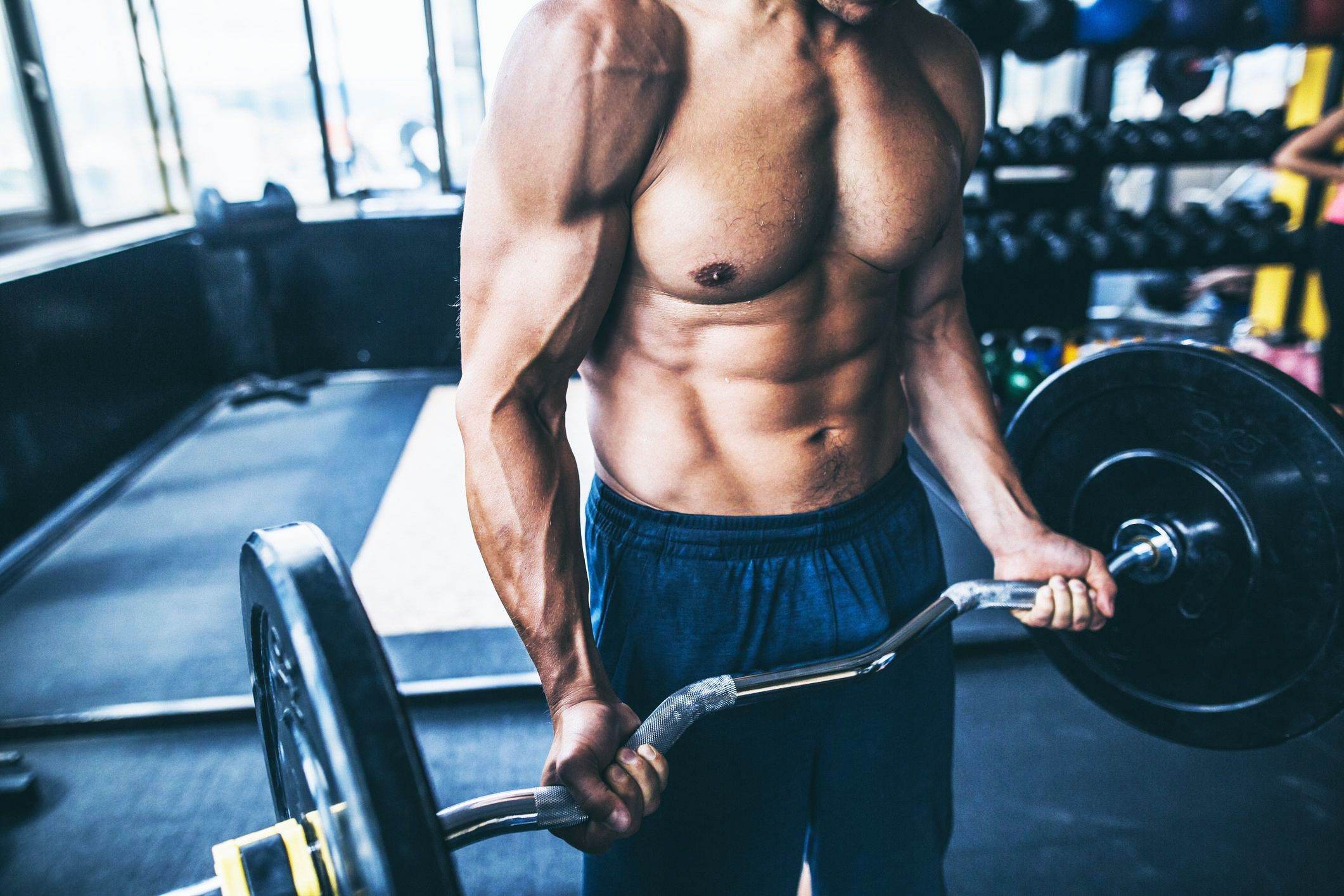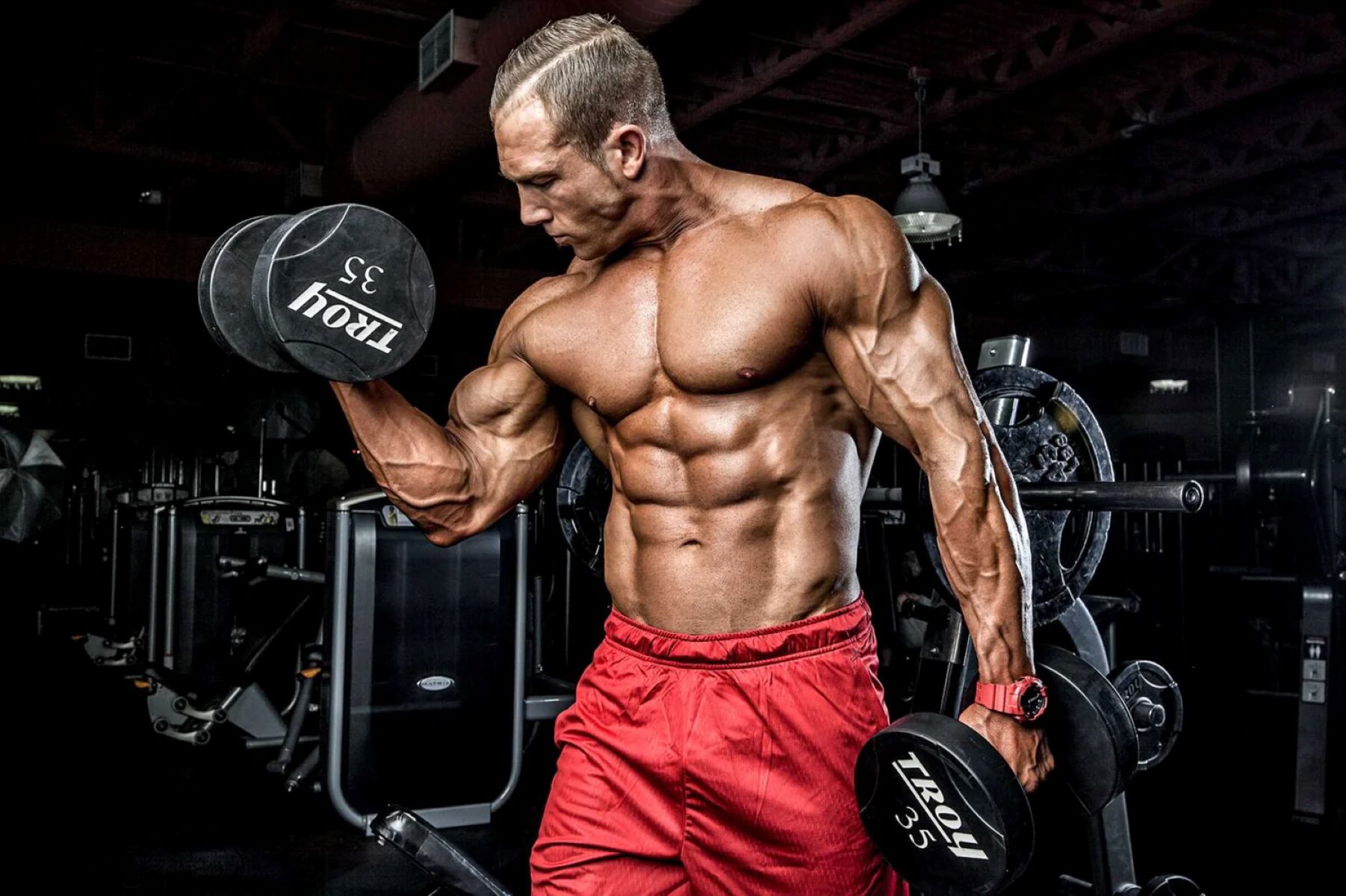

Featured
What Is A Good Bicep Workout
Modified: March 1, 2024
Looking for a featured bicep workout? Discover what makes a good bicep workout and maximize your gains with these effective exercises and techniques.
Introduction
The biceps are one of the most visually appealing muscles in the human body. When well-developed, they give the arms a defined and muscular look, enhancing overall aesthetics. Whether you’re a bodybuilder, fitness enthusiast, or simply want to improve your arm strength, incorporating a good bicep workout into your routine is essential.
But what exactly makes a bicep workout “good”? In simple terms, a good bicep workout targets the biceps effectively, stimulates muscle growth, and prevents injuries. It is essential to understand the anatomy and function of the biceps to design an effective workout routine.
The biceps brachii, commonly known as the biceps, is a two-headed muscle located on the front part of the upper arm. It is responsible for flexing the elbow, supinating the forearm (rotating it to face upward), and assisting in some shoulder movements. The biceps are engaged in various daily activities, such as picking up objects, carrying groceries, or even holding a baby.
Having well-developed biceps not only improves strength and functionality but also boosts confidence and self-esteem. Whether you’re aiming to compete in bodybuilding competitions or simply want to have “beach-ready” arms, a well-rounded bicep workout is crucial.
This article will guide you through the fundamentals of a good bicep workout, highlighting the importance of proper form and technique. You will also learn about common mistakes to avoid and be introduced to a sample bicep workout routine that can be customized according to your fitness level and goals.
So, get ready to flex those muscles and bring out the best in your biceps!
Understanding the Biceps
Before diving into the specifics of a good bicep workout, it’s important to have a solid understanding of the biceps themselves. As mentioned earlier, the biceps brachii is a two-headed muscle located on the front part of the upper arm. These two heads, known as the short head and the long head, originate from different points on the scapula and fuse together to form the main body of the muscle.
The primary function of the biceps is flexing the elbow, which means it allows you to bend your arm at the elbow joint. However, the biceps also have a secondary function of supinating the forearm. Supination involves rotating the forearm to face upward, such as when you hold a dumbbell with your palm facing up.
To effectively target the biceps, it’s important to understand the different exercises that can engage them. While many people solely rely on bicep curls, there are various other exercises that can provide a more comprehensive bicep workout.
Some common bicep exercises include barbell curls, hammer curls, concentration curls, preacher curls, chin-ups, cable curls, dumbbell curls, and reverse curls. Each exercise has its unique benefits and targets slightly different areas of the biceps. By incorporating a variety of exercises into your routine, you can ensure overall bicep development.
In addition to training the biceps directly, it’s important to remember that other compound exercises, such as rows and pull-ups, also engage the biceps to some extent. Including these exercises in your workout routine can provide additional stimulation to the biceps and contribute to their overall growth.
Understanding the anatomy and function of the biceps is crucial for designing an effective bicep workout routine. By targeting the right muscles with the right exercises, you can maximize your results and achieve well-developed, strong biceps.
Importance of Bicep Workouts
When it comes to strength training and overall aesthetics, the importance of including bicep workouts in your routine cannot be overstated. Here are some key reasons why bicep workouts are important:
- Improved Arm Strength: Bicep workouts specifically target the muscles in the upper arm, contributing to increased arm strength. Strong biceps not only assist in daily activities but also enhance performance in other exercises such as pulling movements.
- Enhanced Muscle Definition: Well-developed biceps add definition and shape to your arms, giving them a more sculpted appearance. Whether you’re aiming for a toned look or a more muscular physique, bicep workouts are essential.
- Increased Functional Strength: The biceps play an important role in everyday activities such as lifting objects, pushing doors, and carrying groceries. By strengthening your biceps, you improve your overall functional strength and make these tasks easier.
- Balanced Upper Body: Aesthetically pleasing arms are often characterized by a well-proportioned upper body. Bicep workouts help balance out the muscles in your arms, creating a more symmetrical and visually appealing physique.
- Injury Prevention: Weak biceps can increase the risk of injury, especially when participating in activities that involve lifting or pulling. By strengthening the biceps, you provide stability to the elbow and shoulder joints, reducing the chances of strains or tears.
- Boosted Confidence: There’s no denying the confidence boost that comes with having strong and defined biceps. Feeling good about your physical appearance can have a positive impact on various aspects of your life.
It’s important to note that bicep workouts should be incorporated into a well-rounded fitness routine that addresses all muscle groups. Neglecting other areas of the body can lead to muscular imbalances and potential injuries. However, dedicating specific time to bicep training ensures that you give these muscles the attention they need for optimal growth and strength.
Now that you understand the importance of bicep workouts, it’s time to delve into some common mistakes to avoid when training the biceps.
Common Mistakes to Avoid
When it comes to bicep workouts, there are some common mistakes that people often fall into. Being aware of these mistakes can help you optimize your training and avoid potential setbacks. Here are some common mistakes to avoid:
- Using Momentum: One of the most common mistakes is relying on momentum to lift the weights instead of focusing on controlled and deliberate movements. Swinging the weights not only reduces the effectiveness of the exercise but also increases the risk of injury. Focus on maintaining proper form and control throughout each repetition.
- Not Using a Full Range of Motion: Another mistake is not utilizing a full range of motion during bicep exercises. Partially completing the movement limits the engagement of the biceps and leads to suboptimal results. Ensure that you lower the weight fully and extend the arms fully for each repetition.
- Overtraining the Biceps: While it’s important to target the biceps, overtraining them can hinder your progress. The biceps are relatively small muscles that require adequate rest and recovery. Training them excessively without allowing proper recovery time can lead to diminished results and increased risk of injury.
- Neglecting Other Muscles: Focusing solely on bicep workouts and neglecting other muscle groups can lead to imbalances and a disproportionate physique. It’s important to incorporate exercises that target other muscle groups, such as the back and shoulders, to maintain overall balance and symmetry.
- Improper Form: Maintaining proper form is crucial for maximizing the benefits of each exercise while minimizing the risk of injury. Avoid common form mistakes, such as rounding the back or hunching the shoulders, and ensure that you’re using the correct form for each exercise.
- Using Excessive Weight: Lifting weights that are too heavy can compromise your form and increase the risk of injury. Start with lighter weights and gradually increase the resistance as you gain strength and confidence. It’s important to prioritize proper form and technique over the amount of weight lifted.
By avoiding these common mistakes, you can ensure that your bicep workouts are effective, safe, and productive. Now that you’re aware of these pitfalls, let’s move on to a sample bicep workout routine that you can incorporate into your fitness regimen.
Sample Bicep Workout Routine
A well-designed bicep workout routine should involve a variety of exercises that target different areas of the biceps. Here is a sample bicep workout routine that you can follow:
- Barbell Curl: Start with a classic exercise for building bicep strength and size. Grab a barbell with an underhand grip, keeping your elbows close to your sides. Curl the barbell up towards your chest, squeezing your biceps at the top. Slowly lower the weight back down and repeat for multiple sets of 8-12 reps.
- Hammer Curl: Hold a pair of dumbbells with a neutral grip (palms facing each other). With your elbows tucked in, curl the dumbbells up towards your shoulders, keeping your wrists in a neutral position. Lower the weights back down and repeat for multiple sets of 8-12 reps.
- Concentration Curl: Sit on a bench with a dumbbell in one hand, resting your elbow on your thigh. Curl the dumbbell up towards your shoulder while keeping your upper arm stationary. Squeeze your biceps at the top and then lower the weight back down. Perform multiple sets of 8-12 reps for each arm.
- Preacher Curl: Using a preacher curl bench or an incline bench, place your upper arms against the pad and hold a barbell with an underhand grip. Curl the barbell up towards your shoulders while keeping your upper arms against the pad. Slowly lower the weight back down and repeat for multiple sets of 8-12 reps.
- Chin-Ups: Find a chin-up bar and grip it with your palms facing towards you (underhand grip). From a hanging position, use your biceps to pull your body up until your chin reaches the bar. Slowly lower yourself back down and repeat for multiple sets of 8-12 reps.
- Cable Curl: Attach a straight bar or a rope attachment to a low pulley of a cable machine. Stand with your feet shoulder-width apart and hold the handle with an underhand grip. Curl the handle towards your chest while keeping your elbows stationary. Slowly lower the weight back down and repeat for multiple sets of 8-12 reps.
- Dumbbell Curl: Stand with a dumbbell in each hand, palms facing forward. Curl the dumbbells up towards your shoulders, squeezing your biceps at the top. Slowly lower the weights back down and repeat for multiple sets of 8-12 reps.
- Reverse Curl: Hold a barbell or dumbbells with an overhand grip, hands shoulder-width apart. Curl the weight(s) up towards your shoulders by flexing your elbows. Slowly lower the weight(s) back down and repeat for multiple sets of 8-12 reps.
Remember to warm up before starting your workout routine and cool down afterward. Start with lighter weights to ensure proper form, and gradually increase the resistance as you progress. It’s also important to listen to your body and adjust the intensity and weight as needed.
Note that this is just a sample bicep workout routine. Feel free to customize it by adding or substituting exercises based on your preferences and fitness level. Consulting with a fitness professional or personal trainer can also help you tailor a bicep workout routine to suit your specific goals and needs.
Now that you have a sample bicep workout routine at your disposal, let’s move on to some tips for effective bicep training.
Exercise 1: Barbell Curl
The barbell curl is a classic bicep exercise that is highly effective for building strength and size in the biceps. It targets both heads of the biceps brachii and can be performed with a straight barbell or an EZ bar. Here’s how to perform the barbell curl:
- Starting Position: Stand with your feet shoulder-width apart and grasp the barbell with an underhand grip, hands slightly wider than shoulder-width apart. Allow your arms to fully extend, keeping them close to your body.
- Curling Up: Keeping your upper arms stationary, exhale and curl the barbell towards your chest by flexing your elbows. Focus on squeezing your biceps at the top of the movement. Hold this position for a brief moment to maximize muscle contraction.
- Lowering Down: Inhale as you slowly lower the barbell back down to the starting position, extending your arms fully. Avoid using momentum and maintain control throughout the movement.
- Repetition and Sets: Repeat the movement for the desired number of repetitions. Aim for 8-12 reps per set, and perform multiple sets based on your fitness level and goals. Gradually increase the weight as you progress and feel comfortable with the exercise.
- Tips:
- Keep your core engaged and maintain a straight posture throughout the exercise to avoid excessive swinging or cheating.
- Focus on the mind-muscle connection, fully engaging your biceps during each repetition. Visualize your biceps contracting throughout the movement.
- Avoid using excessive weight that compromises your form. It’s better to lift lighter weights with proper technique than to use heavy weights with incorrect form.
- Vary your grip width to target different areas of the biceps. A wider grip targets the outer head of the biceps, while a narrower grip emphasizes the inner head.
- Experiment with different barbells, such as the EZ bar or a straight barbell, to find which one feels more comfortable and allows for better biceps engagement.
The barbell curl is a foundational exercise for bicep training and can be incorporated into your workout routine to build strength and size in your biceps. Remember to always warm up properly before performing any exercise and consult with a fitness professional if you have any underlying health conditions or concerns.
Now that you have learned how to perform the barbell curl, let’s move on to the next exercise: hammer curl.
Exercise 2: Hammer Curl
The hammer curl is an effective exercise that targets not only the biceps but also the brachialis and brachioradialis muscles. This exercise helps to develop overall arm strength and size. Here’s how to properly perform the hammer curl:
- Starting Position: Stand with your feet shoulder-width apart and hold a pair of dumbbells in each hand. Keep your arms fully extended, and your palms facing your body with a neutral grip (thumbs pointing forward).
- Curling Up: Exhale as you flex your elbows and curl the dumbbells towards your shoulders in a controlled manner. Keep your upper arms stationary and focus on squeezing your biceps at the top of the movement.
- Lowering Down: Inhale as you slowly lower the dumbbells back down to the starting position while maintaining control. Fully extend your arms without locking out your elbows.
- Repetition and Sets: Aim to perform 8-12 reps per set for optimal muscle activation. Start with a weight that challenges you but allows you to maintain proper form. Gradually increase the weight as you become comfortable with the exercise.
- Tips:
- Maintain a neutral wrist position throughout the exercise to minimize stress on the wrists and maximize bicep engagement.
- Focus on controlling the movement and avoid swinging the dumbbells. This ensures that the biceps are doing the majority of the work.
- Engage your core for stability and maintain a slight bend in your knees throughout the exercise.
- Keep your upper arms close to your sides and avoid using excessive body movement or momentum to lift the weights.
- Vary the grip width by using different dumbbell handles or using a single dumbbell at a time to target different areas of the biceps.
The hammer curl is an excellent variation of bicep curls as it targets both the biceps and the muscles in the forearm, providing a more comprehensive arm workout. Incorporating this exercise into your routine can help develop well-rounded arm strength and size.
Remember to warm up properly before performing any exercise and to choose weights that challenge you without compromising your form. If you have any concerns or underlying health conditions, it’s always advisable to consult with a fitness professional or healthcare provider.
Now that you have learned how to perform the hammer curl, let’s move on to the next exercise: concentration curl.
Exercise 3: Concentration Curl
The concentration curl is a highly effective exercise for isolating and targeting the biceps. It helps to develop peak bicep contraction and overall arm strength. Here’s how to properly perform the concentration curl:
- Starting Position: Sit on a bench with your feet flat on the floor and spread your legs apart to create a stable base. Hold a dumbbell in one hand and place the back of your upper arm against the inside of your thigh, just above the knee. Your arm should be fully extended, and your palm should be facing inwards.
- Curling Up: Keeping your upper arm stationary, exhale as you curl the dumbbell towards your shoulder by flexing your elbow. Focus on squeezing your biceps at the top of the movement to maximize muscle contraction. Hold this position for a brief moment.
- Lowering Down: Inhale as you slowly lower the dumbbell back down to the starting position, fully extending your arm. Maintain control throughout the movement and avoid using momentum.
- Repetition and Sets: Aim to perform 8-12 reps per set for optimal muscle activation. Switch arms and repeat the same number of repetitions on the other side. Perform multiple sets based on your fitness level and goals.
- Tips:
- Keep your back straight and maintain proper posture throughout the exercise. Engage your core for stability.
- Ensure that your upper arm remains against the inside of your thigh throughout the movement. This helps to isolate and target the biceps effectively.
- Focus on the mind-muscle connection and concentrate on contracting the biceps throughout the exercise. Visualize your biceps working and growing stronger with each repetition.
- Control the speed of the movement both during the concentric (lifting) and eccentric (lowering) phases to maximize muscle engagement.
- Make sure to use an appropriate weight that challenges your biceps without compromising your form. Adjust the dumbbell weight as needed.
The concentration curl is a fantastic exercise for developing strength, size, and definition in your biceps. By focusing on one arm at a time, you can achieve better muscle isolation and activation. Don’t forget to balance out the exercise by performing the same number of repetitions on each arm.
Remember to warm up properly before performing any exercise and to choose weights that challenge you without compromising your form. If you have any concerns or underlying health conditions, it’s always advisable to consult with a fitness professional or healthcare provider.
Now that you have learned how to perform the concentration curl, let’s move on to the next exercise: preacher curl.
Exercise 4: Preacher Curl
The preacher curl is an isolation exercise that primarily targets the biceps brachii muscle, helping to develop overall bicep strength and size. It is commonly performed using a preacher curl bench, but it can also be modified using an incline bench. Here’s how to properly perform the preacher curl:
- Starting Position: Adjust the preacher curl bench so that your upper arms rest comfortably on the angled pad. Grab a barbell or an EZ bar with an underhand grip, hands slightly wider than shoulder-width apart. Extend your arms fully and place your feet flat on the floor.
- Curling Up: Exhale and curl the barbell or EZ bar towards your shoulders by flexing your elbows. Keep your upper arms pressed against the pad and your forearms vertical. Focus on squeezing your biceps at the top of the movement to maximize muscle contraction.
- Lowering Down: Inhale as you slowly lower the barbell or EZ bar back down to the starting position, fully extending your arms. Maintain control throughout the movement and avoid using momentum.
- Repetition and Sets: Aim to perform 8-12 reps per set for optimal muscle activation. Gradually increase the weight as you become comfortable with the exercise. Perform multiple sets based on your fitness level and goals.
- Tips:
- Ensure that your upper arms remain in contact with the preacher curl bench throughout the movement. This helps isolate the biceps and minimizes assistance from other muscles.
- Maintain a neutral wrist position to avoid excessive strain on the wrists. Adjust your grip width if needed to find a comfortable position.
- Focus on the mind-muscle connection and concentrate on fully contracting your biceps during each repetition. Visualize your biceps working and growing stronger with each curl.
- Control the speed of the movement both during the concentric (lifting) and eccentric (lowering) phases to maximize muscle engagement and minimize stress on the joints.
- Adjust the bench and seat height to ensure proper alignment and range of motion for your body structure.
The preacher curl is an excellent exercise for effectively targeting and isolating the biceps, providing a challenging and effective workout to strengthen and develop your arm muscles.
Remember to warm up properly before performing any exercise and choose weights that challenge you without compromising your form. If you have any concerns or underlying health conditions, it’s always advisable to consult with a fitness professional or healthcare provider.
Now that you have learned how to perform the preacher curl, let’s move on to the next exercise: chin-ups.
Exercise 5: Chin-Ups
Chin-ups are a compound exercise that targets multiple muscle groups, including the biceps, back, and shoulders. They are an excellent exercise for building upper body strength and developing well-rounded arm muscles. Here’s how to properly perform chin-ups:
- Starting Position: Stand in front of a chin-up bar and grab it with an underhand grip, hands shoulder-width apart. Make sure your palms are facing towards you. Hang from the bar with your arms fully extended and your feet off the ground.
- Pulling Up: Exhale and engage your back, arms, and core as you pull your body up towards the bar. Focus on driving your elbows down and back, aiming to bring your chin above the bar. Keep your chest up and maintain a controlled movement.
- Lowering Down: Inhale as you slowly lower your body back down to the starting position, fully extending your arms. Maintain control throughout the movement and avoid swinging or using momentum.
- Repetition and Sets: Aim to perform 8-12 reps per set for optimal muscle activation. If you find it challenging to perform a full chin-up, you can start with assisted chin-ups using a resistance band or a chin-up machine. Gradually work towards performing unassisted chin-ups as you gain strength.
- Tips:
- Keep your body straight and avoid excessive swinging during the movement. Engage your core muscles to maintain stability.
- Focus on contracting your biceps as you pull yourself up, squeezing them at the top of the movement.
- Use a controlled and steady pace throughout the exercise, emphasizing the eccentric (lowering) phase to maximize muscle engagement.
- If you’re new to chin-ups, start with a grip that feels comfortable and gradually progress to a wider grip as you gain strength.
- If you are unable to perform a full chin-up, work on building your strength gradually by performing negative chin-ups, where you focus on the lowering phase of the movement.
Chin-ups are an excellent exercise for not only developing your biceps but also strengthening your back and overall upper body. Incorporating chin-ups into your routine adds variety and challenges your muscles in a different way.
Remember to warm up properly before performing any exercise and choose a chin-up variation that suits your fitness level. If you have any concerns or underlying health conditions, it’s always advisable to consult with a fitness professional or healthcare provider.
Now that you have learned how to perform chin-ups, let’s move on to the next exercise: cable curl.
Exercise 6: Cable Curl
The cable curl is a versatile exercise that provides constant tension throughout the entire range of motion, making it highly effective for targeting the biceps. It helps to improve both strength and size in the biceps while also engaging the forearms and stabilizing muscles. Here’s how to properly perform the cable curl:
- Starting Position: Stand facing a cable machine with a straight bar attachment positioned at the lowest setting. Grasp the bar with an underhand grip, hands shoulder-width apart. Keep your feet shoulder-width apart and your knees slightly bent.
- Curling Up: Exhale and slowly curl the bar towards your shoulders by flexing your elbows, keeping your upper arms stationary. Focus on contracting your biceps throughout the movement and squeezing them at the top. Pause briefly to maximize the contraction.
- Lowering Down: Inhale as you gradually lower the bar back down to the starting position, fully extending your arms. Maintain control throughout the movement and avoid using momentum or swinging.
- Repetition and Sets: Aim to perform 8-12 reps per set for optimal muscle activation. Gradually increase the weight as you become comfortable with the exercise. Perform multiple sets based on your fitness level and goals.
- Tips:
- Keep your knees slightly bent and maintain a strong and stable stance throughout the exercise.
- Engage your core muscles for stability and control throughout the movement.
- Focus on using a controlled tempo and emphasize the contraction of your biceps during the curling phase.
- Maintain a slight forward lean from your hips, but avoid excessive swinging or leaning backward.
- Experiment with different grip widths and attachments, such as a rope or single handle, to target your biceps from different angles.
The cable curl is an excellent exercise that provides constant tension on the biceps, promoting muscle growth and development. It also allows for a varied range of motion and adjustable resistance, making it adaptable to your fitness level and goals.
As with any exercise, it’s important to warm up properly before performing cable curls and to choose weights that challenge you without compromising your form. If you have any concerns or underlying health conditions, it’s always advisable to consult with a fitness professional or healthcare provider.
Now that you have learned how to perform the cable curl, let’s move on to the next exercise: dumbbell curl.
Exercise 7: Dumbbell Curl
The dumbbell curl is a classic exercise that effectively targets the biceps, helping to build strength, size, and definition in the muscles. It allows for a greater range of motion and works each arm independently, promoting balanced muscle development. Here’s how to properly perform the dumbbell curl:
- Starting Position: Stand with your feet shoulder-width apart and hold a dumbbell in each hand, palms facing forward. Keep your arms fully extended and allow the dumbbells to hang by your sides.
- Curling Up: Exhale and curl one dumbbell towards your shoulder by flexing your elbow. Keep your upper arm stationary and focus on contracting your biceps throughout the movement. Squeeze your biceps at the top of the movement.
- Lowering Down: Inhale as you slowly lower the dumbbell back to the starting position, fully extending your arm. Maintain control throughout the movement and avoid swinging or using momentum.
- Repetition and Sets: Aim to perform 8-12 reps per set for optimal muscle activation. Alternate between each arm for each repetition. Gradually increase the weight as you become comfortable with the exercise. Perform multiple sets based on your fitness level and goals.
- Tips:
- Maintain proper posture throughout the exercise, keeping your back straight and your core engaged.
- Focus on controlling the movement both during the concentric (lifting) and eccentric (lowering) phases of the exercise.
- Keep your elbows close to your sides and avoid using excessive body movement or swinging to lift the weights.
- Engage your biceps and visualize them working to lift the weights, maximizing the mind-muscle connection.
- Experiment with different grip variations, such as using a neutral grip or turning your palms inward, to target different areas of the biceps.
The dumbbell curl offers versatility and can be performed with a variety of weights to suit your strength and fitness level. It is a fundamental exercise in bicep training and is great for building overall arm strength and size.
As always, warm up properly before performing any exercise and choose weights that challenge you without compromising your form. If you have any concerns or underlying health conditions, it’s advisable to consult with a fitness professional or healthcare provider.
Now that you have learned how to perform the dumbbell curl, let’s move on to the final exercise: reverse curl.
Exercise 8: Reverse Curl
The reverse curl is an effective exercise that primarily targets the brachioradialis muscle in the forearms while also engaging the biceps. It helps to improve grip strength and overall arm development. Here’s how to properly perform the reverse curl:
- Starting Position: Stand with your feet shoulder-width apart and hold a barbell or a pair of dumbbells with an overhand grip, hands shoulder-width apart. Keep your arms fully extended and allow the weight to hang in front of you.
- Curling Up: Exhale and curl the barbell or dumbbells towards your shoulders by flexing your elbows. Keep your upper arms stationary and focus on squeezing your forearms and biceps. As you curl, your palms should be facing downward instead of upward.
- Lowering Down: Inhale as you slowly lower the weight back down to the starting position, fully extending your arms. Maintain control throughout the movement and avoid using momentum or swinging.
- Repetition and Sets:Aim to perform 8-12 reps per set. Gradually increase the weight as you become comfortable with the exercise. Perform multiple sets based on your fitness level and goals.
- Tips:
- Maintain proper posture throughout the exercise, keeping your back straight and your core engaged.
- Focus on controlling the movement and avoid using excessive body movement or swinging to lift the weights.
- Keep your elbows close to your sides and avoid hyperextension of the wrists.
- Engage your forearms and biceps, visualizing them working to lift the weights and improve grip strength.
- Experiment with different grip variations, such as using a narrower or wider grip, to target different areas of the forearms and biceps.
The reverse curl provides a unique stimulus to the forearms and biceps, helping to develop overall arm strength and definition. By incorporating this exercise into your routine, you can improve grip strength and achieve a more well-rounded arm workout.
Remember to warm up properly before performing any exercise and choose weights that challenge you without compromising your form. If you have any concerns or underlying health conditions, it’s always advisable to consult with a fitness professional or healthcare provider.
Now that you have learned how to perform the reverse curl, you have a comprehensive understanding of various bicep exercises and can incorporate them into your workout routine to achieve strong and well-defined arms.
Tips for Effective Bicep Training
To maximize the effectiveness of your bicep training and ensure optimal results, consider the following tips:
- Vary Your Rep Range: Incorporate both higher and lower rep ranges into your bicep workouts. Higher reps (10-15) can help improve endurance and muscle definition, while lower reps (6-8) focus on building strength and size.
- Progressive Overload: Gradually increase the weight or difficulty of your bicep exercises over time. This progressive overload challenges the muscles and stimulates growth.
- Focus on Proper Form: Maintain proper form throughout each exercise to ensure optimal bicep stimulation and reduce the risk of injury. Avoid swinging or using momentum to lift the weights, and focus on controlled and deliberate movements.
- Mind-Muscle Connection: Develop a strong mind-muscle connection by consciously focusing on the contraction and activation of your biceps during each repetition. Visualize your biceps working and squeezing at the peak of each movement.
- Include Variety in Your Workouts: Don’t rely solely on one or two exercises. Incorporate a variety of bicep exercises, such as curls, chin-ups, and cable curls, to target the muscles from different angles and stimulate overall growth.
- Proper Warm-up: Prioritize a thorough warm-up before your bicep training to increase blood flow, improve flexibility, and prepare the muscles for the upcoming workout. This can help prevent injuries and improve performance.
- Allow for Adequate Recovery: Avoid overtraining your biceps by allowing them sufficient rest and recovery time between workouts. This allows the muscles to repair and grow stronger.
- Proper Nutrition: Ensure you are consuming a balanced diet that includes an adequate amount of protein, carbohydrates, and healthy fats. Proper nutrition supports muscle growth and helps provide the energy needed for intense workouts.
- Stay Consistent: Consistency is key when it comes to bicep training. Dedicate regular time to train your biceps, and be patient as results take time. With consistent effort, you will see progress and improvements in your bicep strength and development.
- Listen to Your Body: Pay attention to your body’s signals and adjust your training accordingly. If an exercise causes discomfort or pain, modify it or seek guidance from a professional. It is important to prioritize safety and prevent potential injuries.
By implementing these tips into your bicep training routine, you can optimize your workouts and achieve the best possible results. Remember that everyone’s fitness journey is unique, so listen to your body and adjust the tips to fit your individual needs and goals.
Conclusion
Congratulations! You now have a comprehensive understanding of bicep training and how to effectively develop and strengthen your biceps. Incorporating a well-rounded bicep workout routine into your fitness regimen can not only enhance the appearance of your arms but also improve your strength and functional abilities.
Remember, a good bicep workout targets the muscles effectively, stimulates muscle growth, and prevents injuries. Understanding the anatomy and function of the biceps is essential for designing an effective bicep workout routine. By incorporating a variety of exercises such as barbell curls, hammer curls, concentration curls, preacher curls, chin-ups, cable curls, dumbbell curls, and reverse curls, you can ensure overall bicep development and maximize your results.
In addition, be mindful of common mistakes to avoid during bicep training, such as using momentum, neglecting other muscle groups, and not maintaining proper form. By following proper technique and incorporating the tips provided, you can make the most out of your bicep workouts.
Keep in mind that consistency is key. Stay dedicated, listen to your body, and apply progressive overload to continually challenge your muscles. Combine your bicep training with a balanced diet, proper nutrition, and adequate rest to support muscle growth and overall fitness.
Now, armed with the knowledge and tips shared in this article, you’re ready to embark on your journey to stronger, more defined biceps. So, go ahead, hit the gym, pick up those dumbbells, and let your biceps shine!
